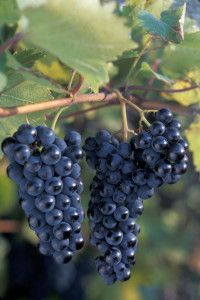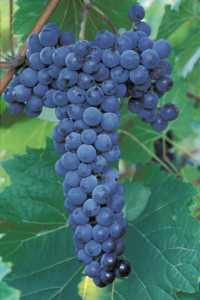Reducing Alcohol Levels in Cold Climate Wines
 When it comes to Marquette wines, two of the biggest criticisms I hear are excessive oak and alcohol. Oak aside, the high brix of varietals such as Marquette and Frontenac can lead to alcohols 14% (alcohol by volume) and greater in the finished wine. The result can be hot and unbalanced wines. The potential alcohol of cool climate and hybrid grapes can be misleading at crush and amelioration should be a consideration. Winemakers must understand the nature of these varietals and plan accordingly.
When it comes to Marquette wines, two of the biggest criticisms I hear are excessive oak and alcohol. Oak aside, the high brix of varietals such as Marquette and Frontenac can lead to alcohols 14% (alcohol by volume) and greater in the finished wine. The result can be hot and unbalanced wines. The potential alcohol of cool climate and hybrid grapes can be misleading at crush and amelioration should be a consideration. Winemakers must understand the nature of these varietals and plan accordingly.

More Marquette is being planted in the Midwest than any other red wine grape, but acid levels can be a challenge for winemakers.
One of the challenges of making wine from skin fermentations is obtaining accurate must data. Pulpy varietals make obtaining harvest data difficult. Sugar and acid can be locked up in the pulp and lead to low readings. Brix and acidity levels may be higher than what is measured soon after crush. Late season fruit that has signs of raisining are also difficult to measure. As fermentation proceeds, the pulp may break down and release more acid and sugar into the must.
Wineries that have gas chromatography may take brix readings and alcohol readings during fermentation to obtain a more precise estimation of potential alcohol. The formula of multiplying the starting brix of the must by 0.55 is often used to predict potential alcohol. Is this conversion factor truly relevant?
Over the years I have noticed many fermentations not adhering to this old rule. Breaking the rule are cool climate grapes and many of the hybrid varieties. Some cooler vinifera regions use conversion factors over 0.6. Experimental evidence has shown brix to alcohol conversions to vary from 0.45 to 0.61 (http://www.apps.fst.vt.edu/extension/enology/EN/69.html). Given the previous arguments, it is clear that predicting potential alcohol based purely off of brix levels is not good winemaking practice. Every winery should measure alcohol following fermentation. High brix musts and the resultant high alcohol wines stress yeast. While many strains can tolerate sugar and alcohol, they do not always do so effectively or happily. Sluggish, stuck, and stressed fermentations are often the result and the attending problems include: Stressed fermentations can lead to
- Elevated volatile acidity.
- Delays to the addition of malolactic bacteria for secondary fermentations.
- Increased risk of oxidation as SO2 levels are kept to a minimum while waiting for MLF to finish.
- Problems re-starting stuck fermentations that can be time consuming and challenging.
- Challenged MLB activity as increasing ethanol levels rise above 14%. At high enough ethanol levels, malolactic fermentation is inhibited altogether.
Is an Ebulliometer or other alcohol measuring device worth it? Besides the difficulties in obtaining accurate brix readings at crush, different yeast will produce alcohol at different levels. Yeast metabolizes sugar into different products besides ethanol. Different strains also have different attenuations. Following fermentation, it is important to verify the alcohol content. (If alcohol is not being measured for sensory or production purposes, consider doing so for tax purposes.)
Despite the many benefits, having an in-house method of analyzing alcohol is not absolutely necessary. However, it is important to have access to alcohol measuring equipment, or have samples sent out samples for analysis. Winemakers have differing opinions about amelioration. Amelioration in the world of wine means adding of water or a water and sugar mixture to must.
In the northern growing regions of Europe, such a practice is performed to reduce acidity. In warm regions, it is used to manage potential alcohol. In cold climate wine regions producing wines from hybrid grapes, it is often used for both reducing acid and potential alcohol. Amelioration, as a term outside of winemaking, refers to making something better or improving upon it.
I tell winemakers that are hesitant to add water to their musts that they are simply adding back the water that nature removed during a dry growing season. The practice is common in California and other wine regions where high brix fruit has become the norm.
The 2012 harvest brought with it a lot of high sugar grapes. Whether you favor or oppose the practice of amelioration, it was a necessity in many instances. High brix at harvest for dry red wines translates into high alcohol, and that can result in many problems.
There are benefits and negatives to amelioration. Amelioration reduces alcohol and acidity, an attractive benefit for varieties such as Marquette and Frontenac. High ethanol in wine can lead to ethanol aromas and a hot palette. Watering the must will dilute tannins and structure, thinning the structure of the wine. It may also dilute flavor and aromas. As mentioned previously, high brix fermentations can stress yeast and inhibit malolactic fermentation.
Amelioration may be necessary to promote a healthy fermentation and fault free wine. If water is not your thing, other methods exist for managing ethanol in wine. Most of these technologies are not readily available in the Midwest. As the industry grows however, it is possible that practices to manage high alcohol wines- including spinning cone, reverse osmosis (RO), and nano-filtration- will become common.
Spinning cone and RO can remove alcohol after fermentation. A portion of the wine is treated and then blended back into the main lot. Ethanol concentration after treatment may be around 4% abv. Nano-filtration can be used to remove water following fermentation. This enables wineries to ameliorate must then adjust to an appropriate ethanol content later. I believe that this form of technology holds the most promise for northern growers. Adding water to the fermentation early alleviates the stress of high brix fermentations. Following fermentation, some or all of the added water can be removed.
Nick Smith an enologist at the University of Minnesota.





Hi Nick – Good article. I was wondering about the very high brix in riparia hybrids like Frontenac………is this due in part to dehydration of the berries? As you probably know, research has shown that vinifera varieties achieve very high brix(above, say, 24 brix) only by evaporation of water from the berries. Is this also true with the Frontenac family?
Great question. Would practices like late season irrigation and high canopy leaf stripping possibly help to reduce per volume sugar contentwhilst encouraging the normal maturation process? At least in the former case, it would seemingly replace the need for dilution of the must.